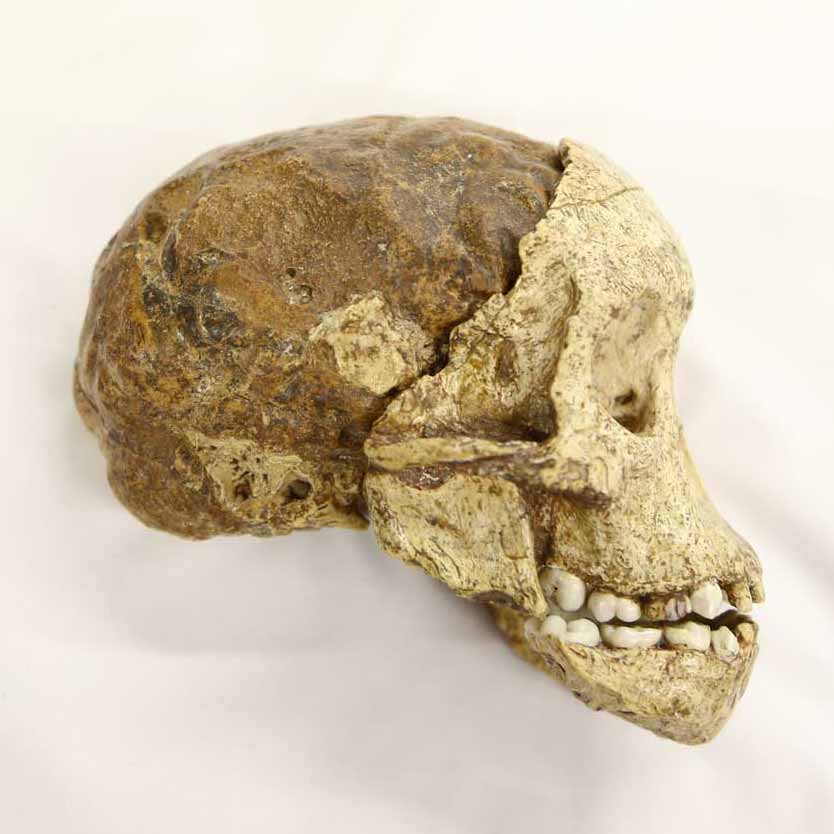Virtual lab: The Taung child
The face, mandible, and endocast from Taung, South Africa, was the first australopith fossil to be identified. Today scientists think that this fossil dates to the period between 2.5 and 3.0 million years ago. At the time of its discovery, its geological age was not known.

The skull is the holotype, or name-bearing fossil specimen, of the species Australopithecus africanus. The fossil endocast of the Taung skull is a natural one, composed of calcite-cemented sediment that filled half of the skull sometime after its burial. The face and mandible are the only parts of the cranial bone that have survived as fossils, but the endocast preserves the form of the inner surface of the cranial vault.
This virtual lab includes a human child's cranium and the cranium of an immature chimpanzee. Both of these individuals had the same stage of dental maturation, with the second deciduous molars in occlusion and the first permanent molars still developing in the crypts. The Taung skull represents a slightly later developmental stage with first molars just erupted but not yet fully in occlusion.
As you examine the Taung skull in comparison to the human and chimpanzee immature individuals, consider some of the following:
- What differences are there between Taung and the chimpanzee?
- What differences do you see between the Taung skull and the human child's skull?
- For more than 10 years after its discovery in 1924, the Taung skull was the only known fossil of any member of its species or genus. Many scientists at the time thought that it was a surprising claim that the Taung skull is a close relative of humans. In your assessment, what features of the fossil support the argument that it was a human relative?
Materials in this lab
- The original Taung specimen is curated at the University of the Witwatersrand, South Africa. The model in this virtual lab is based upon a 3D surface scan of a cast of the fossil endocast, face, and mandible, in the Biological Anthropology collection of UW-Madison.
- The model of the human juvenile cranium in this virtual lab is based on a specimen in the Biological Anthropology collection of UW-Madison.
- The model of the chimpanzee juvenile cranium in this virtual lab is based on a specimen in the Biological Anthropology collection of UW-Madison.
Back to full list of virtual labs